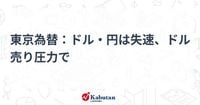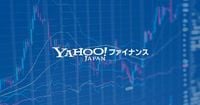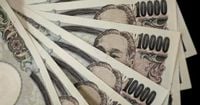The dollar-yen exchange rate has reached the 140 yen level, marking its lowest point since September of last year, as reported in the Tokyo exchange market. This decline is attributed to a weakening dollar observed since the morning hours of April 21, 2025. The rate fell below its recent low, reflecting a significant decrease in value, with the last recorded low being 139.58 yen on September 16, 2024. Currently, the USD/JPY rate stands at 139.97.
In a related development, Meiji Yasuda Life Insurance announced its asset management strategy for the fiscal year 2025, indicating a planned reduction in yen-denominated bonds. This decision arises from the expectation that redemptions will exceed new purchases. The company plans to shift its focus towards increasing foreign bonds, particularly sovereign and credit bonds that come with currency hedging. Kazuo Kitamura, the Executive Officer and Head of the Investment Planning Department, elaborated on this strategy during an investment policy briefing held on April 21.
Kitamura explained that the core of the yen-denominated assets will continue to be super-long-term government bonds, specifically those with 20-year and 30-year maturities. This is aimed at mitigating interest rate risk while securing long-term stable income from dividends. The pace of these purchases will follow a strategy termed 'benchmark buying', with potential additional investments considered in response to rising interest rates. However, given the anticipated higher rate of redemptions compared to purchases, the overall balance of yen-denominated bonds is expected to decrease to a level comparable to the previous fiscal year’s balance of 3.9 trillion yen.
Looking ahead, the company anticipates that the Bank of Japan will implement two additional interest rate hikes within the fiscal year, possibly as early as the July meeting, and two more in fiscal year 2026. This would raise the policy interest rate to 1.5%, suggesting a gradual increase in domestic interest rates in the future. As of April 18, the yield on newly issued 30-year government bonds was 2.7%. Kitamura remarked that while this yield is attractive, exceeding the company’s liability costs, there is no urgency to make immediate purchases.
In the context of foreign bonds, Meiji Yasuda plans to increase its holdings in sovereign bonds with currency hedging, targeting countries with higher yields while being mindful of exchange rate forecasts and hedging costs. The firm also intends to diversify its currency exposure to capture excess returns. As a result, the expected balance of foreign bonds is projected to rise to a level similar to the previous fiscal year’s balance of 1.6 trillion yen.
Meanwhile, the company’s foreign investment trusts will focus on private equity and private debt, utilizing its New York office to enhance its portfolio. In contrast, domestic stocks will undergo a replacement strategy aimed at improving total returns, although the overall balance is expected to decline. Investment in real estate will continue to be concentrated in major metropolitan areas, where the company plans to accumulate quality properties based on market conditions.
As of December 2024, Meiji Yasuda Life's general account assets stood at 46 trillion 522.8 billion yen, with foreign currency-denominated assets accounting for 15 trillion 247.2 billion yen, or 32.8% of the total. The company has provided a market outlook for fiscal year 2025, projecting ranges for key indicators: Japanese government bond 10-year yield at 0.80% to 1.55%, U.S. 10-year Treasury yield at 3.40% to 4.90%, Nikkei Average between 28,000 and 38,000 yen, Dow Jones between 35,000 and 42,000 dollars, and a dollar-yen rate between 138 and 158 yen.
Last week, from April 14 to April 21, the U.S. dollar continued its downward trend, reaching a low of 141 yen at one point. This decline has been linked to a shift in the correlation between the U.S. dollar/yen and the interest rate differential between Japan and the U.S. The inverse correlation that had previously characterized the relationship has temporarily dissipated, indicating a return to a direct correlation where a narrowing interest rate differential leads to a decline in the dollar-yen rate.
Attention has now turned to the implications of ongoing Japan-U.S. trade negotiations, particularly concerning tariff policies, which have raised concerns about further yen appreciation. This context has led to a broader focus on the concept of 'U.S. selling,' where simultaneous declines in U.S. stocks, bonds, and the dollar occur, often referred to as a 'triple decline.' In instances where rising U.S. interest rates typically bolster the dollar, the current situation has been termed a 'bad interest rate hike' due to the dollar's continued depreciation.
Market analysts are closely monitoring whether the 'U.S. selling' risk will persist and how it may impact the dollar-yen exchange rate moving forward. The expected range for the dollar-yen rate for the week of April 21, 2025, is projected to be between 140 and 145 yen. Analysts indicate that until the risk of 'U.S. selling' is adequately addressed, any rebound in the dollar is likely to be limited, with the potential for further declines remaining high.
As speculative positions in the yen have reached unprecedented levels, with a significant surplus noted in the CFTC statistics, the market dynamics suggest that further dollar selling may be constrained. This creates a situation where, depending on market triggers, there could be a resurgence in dollar buying activity. Overall, the interplay between these factors will be crucial in determining the trajectory of the dollar-yen exchange rate in the coming weeks.









